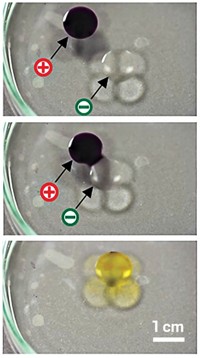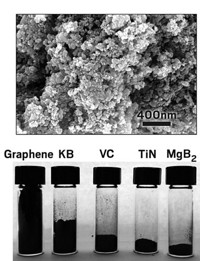Advertisement
Grab your lab coat. Let's get started
Welcome!
Welcome!
Create an account below to get 6 C&EN articles per month, receive newsletters and more - all free.
It seems this is your first time logging in online. Please enter the following information to continue.
As an ACS member you automatically get access to this site. All we need is few more details to create your reading experience.
Not you? Sign in with a different account.
Not you? Sign in with a different account.
ERROR 1
ERROR 1
ERROR 2
ERROR 2
ERROR 2
ERROR 2
ERROR 2
Password and Confirm password must match.
If you have an ACS member number, please enter it here so we can link this account to your membership. (optional)
ERROR 2
ACS values your privacy. By submitting your information, you are gaining access to C&EN and subscribing to our weekly newsletter. We use the information you provide to make your reading experience better, and we will never sell your data to third party members.
Materials
Explosion Injures Student
Accident involved nanostructured explosive materials
by Jyllian N. Kemsley
February 27, 2008

A Polish graduate student lost both hands and an eye in a laboratory accident on Feb. 14 at Military University of Technology, Warsaw. The explosion did not cause a fire, and no one else was hurt.
At the time of the accident, the student, Wojciech Kiciński, 27, was preparing research materials for experiments, university spokesman Jerzy Markowski says. Kiciński received a master's degree in chemistry in 2004 and started doctoral research in 2007. He was working on nanostructured explosive materials under the supervision of chemist Stanisław Cudziło at the university's Institute of Explosive Materials.
Polish police and a team of explosives experts are investigating the cause of the accident. Cudziło was not available to comment but is known in the energetic materials community to be working on nanocomposite materials. Typically energetic nanocomposite materials are composed of mixtures of nanometer-sized oxidizer and fuel particles.
Electrostatic discharge can be a particular safety hazard for energetic nanocomposites, says Alexander E. Gash, a chemist at Lawrence Livermore National Laboratory. Compared with traditional bulk materials, nanoparticles have larger surface areas. When they are handled or transferred, the particles have a greater tendency to rub together and build up a charge, thereby causing an increased risk of electrical discharges that can set off explosions. This is especially true for organic materials that may have poor electrical conductivity, Gash notes.




Join the conversation
Contact the reporter
Submit a Letter to the Editor for publication
Engage with us on Twitter